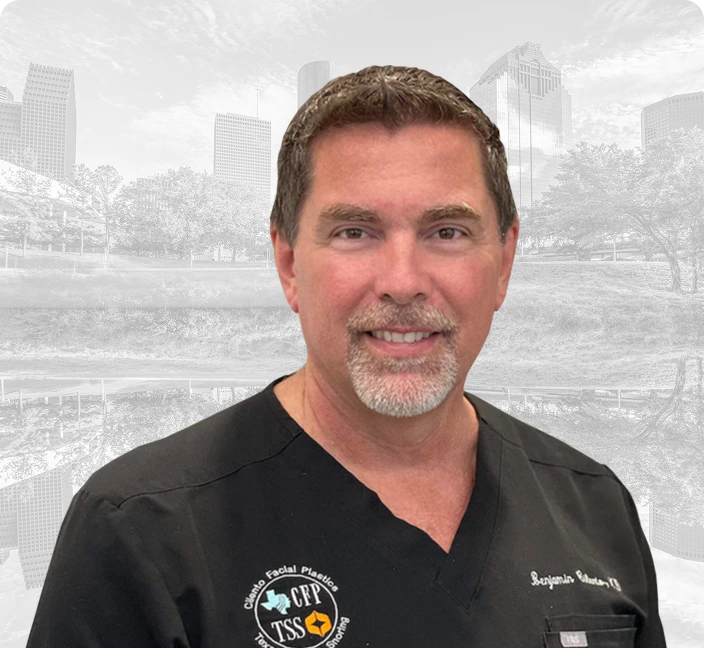Brief Overview of Septoplasty
Septoplasty is a simple surgical procedure that corrects a deviated septum, the thin wall inside your nose that separates the nostrils. This deviation can lead to nasal blockages, hindering proper airflow. The procedure involves repositioning or removing obstructive tissues to create a straighter septum, promoting improved airflow and, consequently, more efficient breathing.
The Connection Between Nasal Health and Fitness
You might wonder how something related to your nose could impact your fitness journey. The link is more direct than you think. Efficient breathing is fundamental to optimal physical performance. When your nose isn’t doing its job correctly – perhaps due to a deviated septum – it can lead to restricted airflow, making even simple exercises feel more challenging than they should.
Septoplasty acts as a catalyst for change in this scenario. By addressing nasal issues, this procedure enhances your ability to take in oxygen during workouts. Improved oxygen intake improves stamina, reduces fatigue, and provides a more effective fitness experience. Septoplasty helps ensure your body can perform at its best, starting with something as essential as breathing.
How to Resume Physical Activity After Septoplasty
1. Start With Patience: The First Few Days After Nose Surgery
2. Ease In: Light Movement and Gentle Activity (Week 2–3)
The healing process continues, but becomes more manageable. Up to two weeks post-surgery, you’ll still experience some nasal congestion, but you can gradually return to normal eating habits. Many patients still have difficulty breathing through the nose during this period. When resuming light activities, avoid exerting pressure on your nasal area. Continue to avoid environments with cigarette smoke or other irritants that could hamper healing. Your surgeon will likely allow you to do gentle nose blowing during this phase, but it should be done carefully, one nostril at a time. Begin with short, gentle walks indoors before progressing to longer outdoor walks as tolerated. Remember that any activity causing pain, increased pressure in your nasal area, or excessive breathing through the mouth should be immediately stopped.
3. Gradual Return to Light Exercise (Weeks 4-5)
By weeks four and five, your nasal septum has stabilized significantly, allowing for a more active lifestyle. However, contact sports or activities that risk impacting the nasal bone should still be strictly avoided. Most patients can resume normal activities of daily living during this period, though with continued mindfulness about the nasal area. Begin with low-impact exercises like gentle yoga, moderate-intensity stationary cycling, or swimming (once your surgeon approves water activities). As you feel more comfortable, gradually increase your workouts’ duration and intensity, but always listen to your body’s signals. If you experience pain, pressure, or abnormal sensations in your nose, scale back immediately. Remember that healing timelines vary considerably among individuals, so comparing your progress to others isn’t helpful.
4. Full Routine and Cardio Reintegration (Week 6 and Beyond)
Around the six-week mark, your nasal tissues have typically healed enough to support a return to your normal exercise routine. Most surgeons allow patients to resume aerobic exercise at full intensity, though it’s wise to build back gradually rather than immediately pushing to pre-surgery levels. High-impact activities and heavy lifting can now be reintroduced with proper technique and awareness. Monitor how your nose feels during and after workouts, particularly noting any pressure changes, discomfort, or breathing difficulties. If you experience any concerning symptoms, temporarily reduce your exercise intensity and consult with your surgeon. Many patients report improved athletic performance after recovery as their corrected septum allows for more efficient breathing during physical exertion.
5. Breathing Techniques to Maximize Results
Learning proper breathing techniques can significantly enhance your recovery and prevent complications when returning to strenuous exercise after septoplasty. Focus on diaphragmatic rather than shallow chest breathing to reduce stress on healing nasal structures. Practice alternate nostril breathing exercises (once cleared by your surgeon) to strengthen and balance airflow through both nasal passages. Begin with shorter breathing sessions and gradually increase duration as comfort allows. When exercising, concentrate on breathing patterns that feel comfortable rather than forcing yourself to breathe exclusively through your nose if it causes discomfort.
6. Follow-Up Visits, Post-Operative Care, and Monitoring Progress
Although septoplasty is not considered a major surgery, consistent post-operative care remains essential for optimal results. Always follow your surgeon’s specific instructions regarding nasal rinses, medications, and activity restrictions to promote healing. Monitor your blood pressure during the recovery period, particularly when beginning to exercise again, as elevated pressure can affect healing nasal tissues. Make sure to attend follow-up appointments even if you feel completely recovered, as your surgeon can identify subtle concerns that might not be apparent to you. Be transparent about your medical history and recovery experience during these visits, as this information guides any necessary adjustments to your recovery plan. In some cases, additional treatment options might be recommended if your septum healing or functional outcomes aren’t progressing as expected.
Benefits of Septoplasty for Fitness Enthusiasts
Let’s discuss the benefits of septoplasty for fitness enthusiasts in terms of performance and workout.
Improved Breathing Efficiency During Workouts
Septoplasty offers many benefits, such as fixing a deviated septum. This procedure unlocks a smoother, more efficient breathing experience. With unobstructed airflow, each breath becomes more purposeful during workouts. You will no longer struggle for air or feel limited by nasal congestion. This enhanced breathing efficiency allows you to focus on the exercises, making your fitness journey more enjoyable and effective.
Enhanced Stamina and Endurance
Better Sleep Quality and Its Impact on Septoplasty Recovery
Decreased Risk of Exercise-Related Injuries
Overcoming Challenges and Setbacks
Embracing septoplasty for its fitness benefits comes with some challenges. Nevertheless, these obstacles can be navigated effectively with the right mindset and approach.
Addressing Potential Complications and Discomfort
It’s important to acknowledge that, like any medical procedure, septoplasty may involve temporary discomfort or potential complications. However, understanding these possibilities and maintaining open communication with your healthcare provider ensures that any issues are promptly addressed. By being proactive and informed, you can confidently navigate the post-surgery phase, knowing that the discomfort is a transient stage leading to long-term benefits
Mental Resilience During the Septoplasty Recovery Time
Adjusting Fitness Routines as Needed
While recovery may necessitate a temporary adjustment to your workout routine, it is crucial to stay active within what feels comfortable. This might mean opting for lighter exercises initially and gradually reintroducing more intense workouts as you progress. The key is to listen to your body, communicate with your healthcare provider, and make adjustments that align with your recovery journey.
Consult Texas Sinus & Snoring for Personalized Advice
If you’re contemplating septoplasty to enhance your fitness journey, we invite you to consult with us at Texas Sinus & Snoring. Our services are tailored to your goals, ensuring that the road ahead aligns seamlessly with your aspirations. From the initial conversation to post-operative care, our team is dedicated to making your septoplasty experience as inviting and transformative as possible.
Frequently Asked Questions
Is septoplasty only for correcting breathing issues, or can it enhance my fitness performance?
Septoplasty primarily addresses nasal obstructions, and the improved nasal airflow can indeed have a positive impact on your fitness. Better breathing efficiency during workouts may lead to enhanced endurance and stamina. Septoplasty may also involve turbinate reduction or procedures addressing sinus problems to remove all obstructions inside the nasal passages.
What kind of discomfort can I expect during the recovery period after septoplasty, and how will it affect my ability to exercise?
Are there specific exercises I should avoid after septoplasty, and how soon can I resume my regular fitness routine?
Will septoplasty impact my sleep quality, and how does that relate to my fitness recovery?
Is septoplasty considered a major surgery?
When is it safe to resume normal activities after undergoing septoplasty?
If I eat crunchy foods during the first week of recovery, will it affect my healing progress?
Why is it important to sneeze with my mouth open during recovery after septoplasty?
When should I contact my healthcare provider?
How can Texas Sinus & Snoring support me throughout my septoplasty journey, especially regarding my fitness goals?




